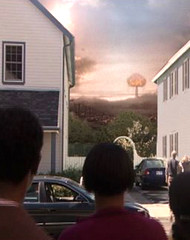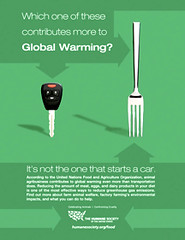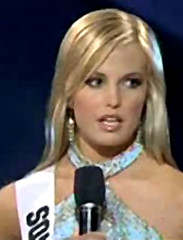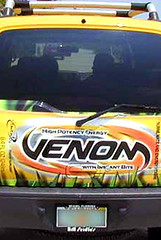On July 29, we launched the Expanded Universe Short Story Competition with the dual purpose of expanding the Jericho universe and promoting the show where it could not otherwise be promoted. Did it work? Consider the mini work plan…
The Objective. Promote Jericho. Demonstrate the potential depth of a storyline beyond the show. Create a communication bridge between the buzz marketing efforts of fans and the start of the new season (which is still to be measured).
The Solution. Launch a Jericho-themed short story contest that asked writers, contest entrants, and Jericho fans to write about the world beyond the town, while encouraging others to learn about the show.
The Results. More than 50 sites, blogs, and social networks (the majority of them not related to the show) promoted the contest, driving more than 2,000 unique visitors to our blog last month.
Approximately 60 percent of these visitors did not originate from Jericho-related sites and sources; thousands more bypassed our blog all together and visited the CBS Jericho Web site direct or Wikipedia entries as suggested material for background information. We received about two dozen entries, which is a solid return given the specificity of the contest and fan-oriented prizes.
The cost per impression, employing only social media, was minimal. About one cent per impression. The promotion for the show doesn’t end here. After we announce the winners, we will run the first three finishers in the weeks ahead.
The Winners. We asked our judges (not all of them Jericho fans) to rate submissions based on originality, clarity, humanity, and vividness. No names were included on the printed versions, ensuring every story would stand on its own.
It was not easy. Suffice to say that we may be announcing winners today, but there were no losers. Toward the end of the selection, even the most finite details were considered, including whether the writers had met the contest criteria.
Looking back, I wish I would have included additional slots for honorable mentions as one theme was persistent across all judge comments: all of the entries had merit. While some stories were better crafted than others, the passion that most submitters had for the show was not only apparent, but admirable.
The vividness of the stories was exceptional. Every perspective was unique, ranging from foreign correspondents covering the crisis and preachers finding their purpose to the comfort found in family pets and being isolated at an archaeological dig on that day. So, even if not listed here, I strongly encourage all of the authors to share their stories as they deserve an audience. With that said, these are the three who will be sharing for the next three Sundays on our blog…
First Place. “Checkmate” by Nick Lysne (British Columbia, Canada)
Second Place. “Dear Journal” by Myles McNutt (Nova Scotia, Canada)
Third Place. “Letters To The Lost” by Ray Hayton (California, U.S.A.)
Congratulations to you all. We look forward to sharing your stories in the weeks ahead and will be contacting you this weekend. We will also be writing about Jericho consumer marketing efforts tomorrow, but please do not forget we will be running the first place story this Sunday. All our best!
Disclaimer: "Jericho” and its related characters are the property of CBS Paramount Television Network and Junction Entertainment. This contest is solely for entertainment purposes. Copywrite, Ink. is not affiliated with CBS or Junction Entertainment.

The Objective. Promote Jericho. Demonstrate the potential depth of a storyline beyond the show. Create a communication bridge between the buzz marketing efforts of fans and the start of the new season (which is still to be measured).
The Solution. Launch a Jericho-themed short story contest that asked writers, contest entrants, and Jericho fans to write about the world beyond the town, while encouraging others to learn about the show.
The Results. More than 50 sites, blogs, and social networks (the majority of them not related to the show) promoted the contest, driving more than 2,000 unique visitors to our blog last month.
Approximately 60 percent of these visitors did not originate from Jericho-related sites and sources; thousands more bypassed our blog all together and visited the CBS Jericho Web site direct or Wikipedia entries as suggested material for background information. We received about two dozen entries, which is a solid return given the specificity of the contest and fan-oriented prizes.
The cost per impression, employing only social media, was minimal. About one cent per impression. The promotion for the show doesn’t end here. After we announce the winners, we will run the first three finishers in the weeks ahead.
The Winners. We asked our judges (not all of them Jericho fans) to rate submissions based on originality, clarity, humanity, and vividness. No names were included on the printed versions, ensuring every story would stand on its own.
It was not easy. Suffice to say that we may be announcing winners today, but there were no losers. Toward the end of the selection, even the most finite details were considered, including whether the writers had met the contest criteria.
Looking back, I wish I would have included additional slots for honorable mentions as one theme was persistent across all judge comments: all of the entries had merit. While some stories were better crafted than others, the passion that most submitters had for the show was not only apparent, but admirable.
The vividness of the stories was exceptional. Every perspective was unique, ranging from foreign correspondents covering the crisis and preachers finding their purpose to the comfort found in family pets and being isolated at an archaeological dig on that day. So, even if not listed here, I strongly encourage all of the authors to share their stories as they deserve an audience. With that said, these are the three who will be sharing for the next three Sundays on our blog…
First Place. “Checkmate” by Nick Lysne (British Columbia, Canada)
Second Place. “Dear Journal” by Myles McNutt (Nova Scotia, Canada)
Third Place. “Letters To The Lost” by Ray Hayton (California, U.S.A.)
Congratulations to you all. We look forward to sharing your stories in the weeks ahead and will be contacting you this weekend. We will also be writing about Jericho consumer marketing efforts tomorrow, but please do not forget we will be running the first place story this Sunday. All our best!
Disclaimer: "Jericho” and its related characters are the property of CBS Paramount Television Network and Junction Entertainment. This contest is solely for entertainment purposes. Copywrite, Ink. is not affiliated with CBS or Junction Entertainment.






















